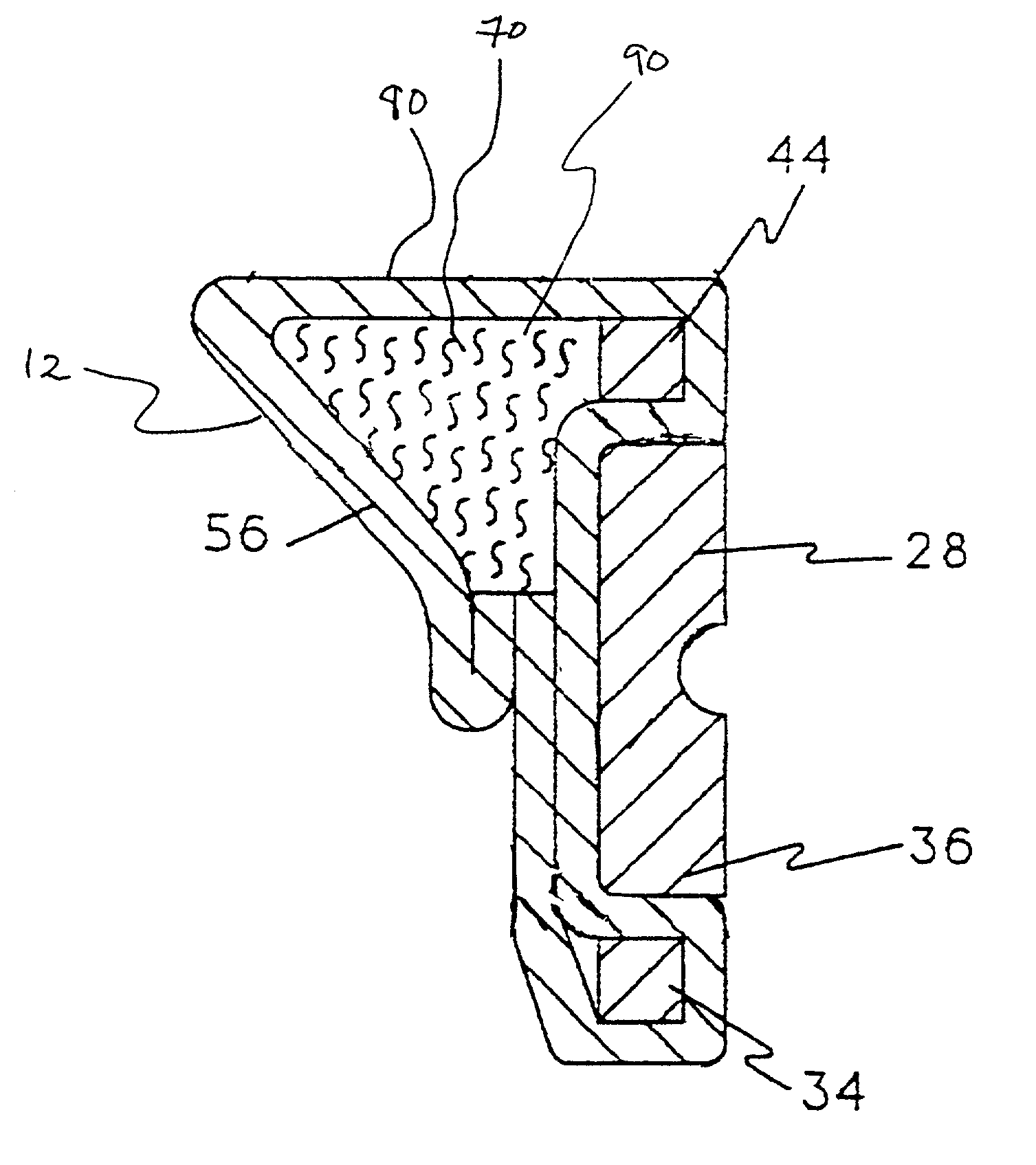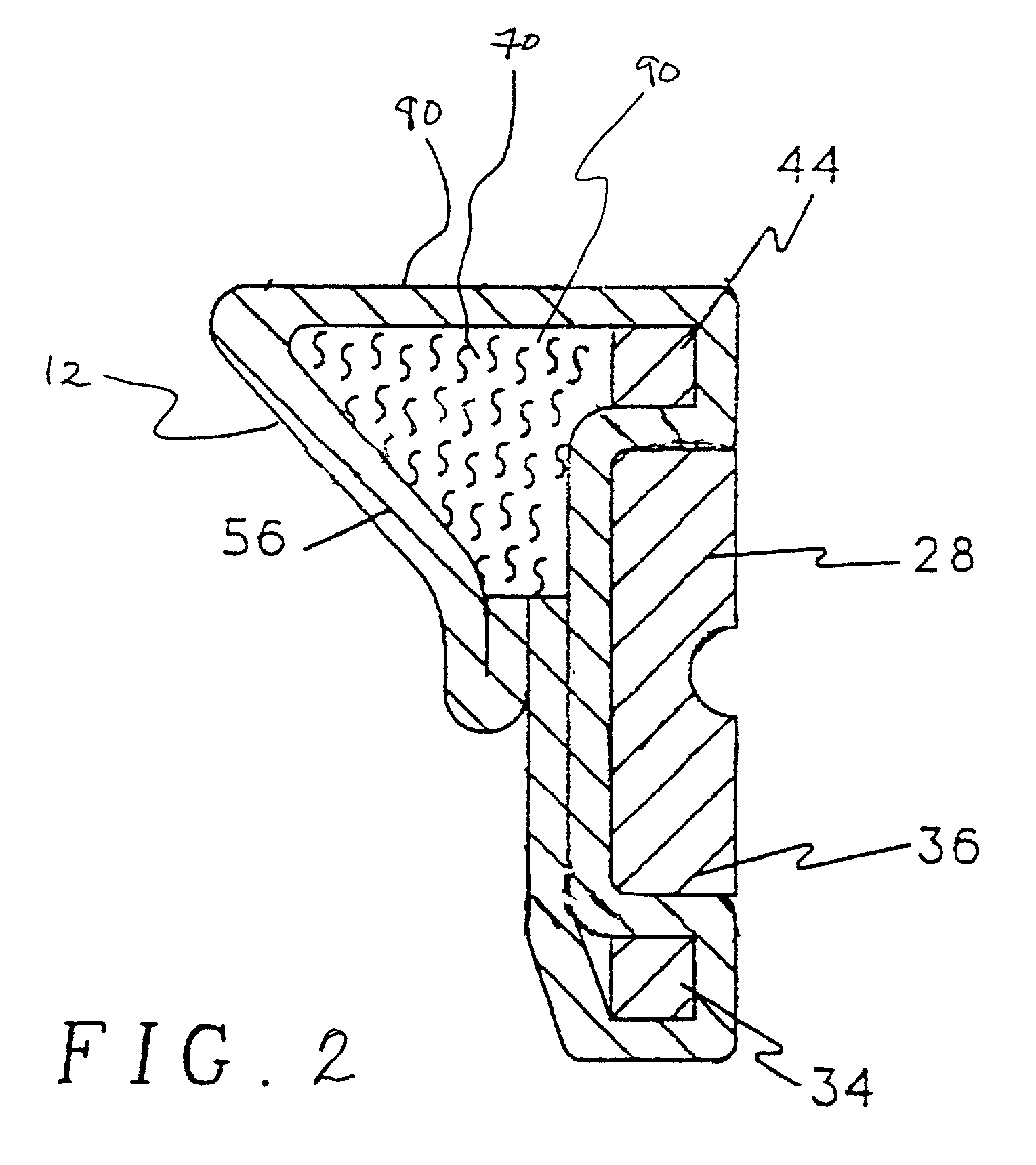Antibiotic treated implantable medical devices
a technology of medical devices and antimicrobial substances, applied in the field of medical devices, can solve the problems of chronic inflammation, excessive growth of tissue on implantable medical devices, and certain risks of complications of implantable medical devices, and achieve the effect of preventing or reducing the severity of complications
- Summary
- Abstract
- Description
- Claims
- Application Information
AI Technical Summary
Benefits of technology
Problems solved by technology
Method used
Image
Examples
example 1
Pannus Overgrowth Onto a Mechanical Heart Valve in an Animal Study
[0056]The mitral valve of a 176 day old, 63 kg male sheep was replaced with a size 29 mitral model St. Jude Medical mechanical heart valve (CAP-1). The techniques used for the implant study followed E. D. Irwin et al., “Long Term Evaluation of Prosthetic Mitral Valves In Sheep,” J. Invest. Surgery, 6, 133–141 (1993). The surgical procedure was uneventful and the animal recovered in the normal fashion.
[0057]After surgery, the animal was transferred to the farm. Throughout the long-term holding period, the animal was healthy. On postoperative day 181, the animal was sacrificed and the valve removed for pathological examination. Upon gross examination, pannus was observed protruding over the orifice of the valve (FIG. 3). Accordingly, untreated mechanical valves have been demonstrated to be susceptible to pannus overgrowth.
example 2
Preparation of Antibiotic Treated Heart Valve for Phase I Animal Study
[0058]To prevent accumulation of antibiotic between rotatable components of the heart valve, the inner diameters of mitral valve sewing cuff sub-assemblies of Carbomedics CPHVTM 27 mm heart valves were masked by placing silicone elastomer plugs in the cuff sub-assembly. To improve masking characteristics, the silicone elastomer masks were placed under a compressive load to expand the plug to obtain an intimate contact with the inner diameter of the sewing cuff sub-assembly.
[0059]Antibiotic solution was prepared by mixing / dissolving 7.5 and 12.0 grains of minocycline and rifampin, respectively, into 300 ml of methanol at 45° C. Solution concentrations were measured by High Performance Liquid Chromatography (HPLC) to be 25.1 mg / ml and 45.6 mg / ml for minocycline and rifampin, respectively. Using syringes, sewing cuff assemblies were then injected at six locations with a total of 2.15 ml of the antibiotic solution and...
example 3
Preparation of Antibiotic Treated Heart Valve for Phase II Animal Study
[0062]The inner diameters of mitral valve sewing cuff sub-assemblies were masked with silicone elastomer plugs according to the procedure described in Example 2.
[0063]Antibiotic solution was prepared by mixing / dissolving 12.6 and 20.1 grams of minocycline and rifampin, respectively, into 300 ml of methanol at 45° C. Solution concentrations were measure to be 44.4 mg / ml and 75.2 mg / ml for minocycline and rifampin, respectively. Using syringes, sewing cuff assemblies were then injected at six locations with a total of 1.69 ml of solution and allowed to dry overnight before assembling into a final heart valve assembly.
[0064]Six CPHVTM 27 mm heart valves were prepared according to the foregoing protocol, and implanted, along with two untreated control valves, for 90–98 days (nominal 90 day implantation time) in the mitral position of juvenile sheep according to the protocol of Example 2.
[0065]After the 90 day nominal...
PUM
| Property | Measurement | Unit |
|---|---|---|
| concentration | aaaaa | aaaaa |
| diameters | aaaaa | aaaaa |
| concentrations | aaaaa | aaaaa |
Abstract
Description
Claims
Application Information
 Login to View More
Login to View More - R&D
- Intellectual Property
- Life Sciences
- Materials
- Tech Scout
- Unparalleled Data Quality
- Higher Quality Content
- 60% Fewer Hallucinations
Browse by: Latest US Patents, China's latest patents, Technical Efficacy Thesaurus, Application Domain, Technology Topic, Popular Technical Reports.
© 2025 PatSnap. All rights reserved.Legal|Privacy policy|Modern Slavery Act Transparency Statement|Sitemap|About US| Contact US: help@patsnap.com



